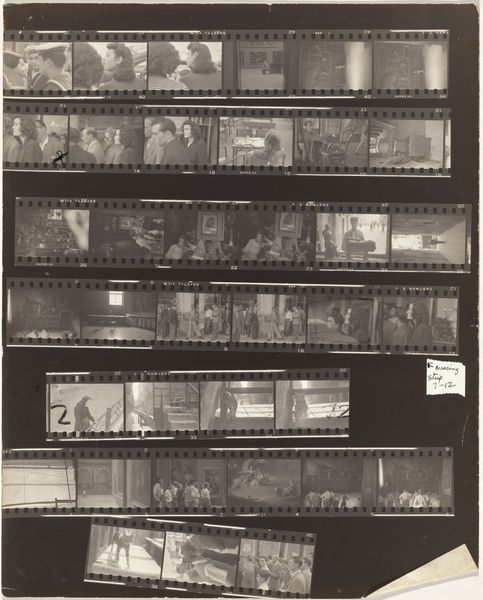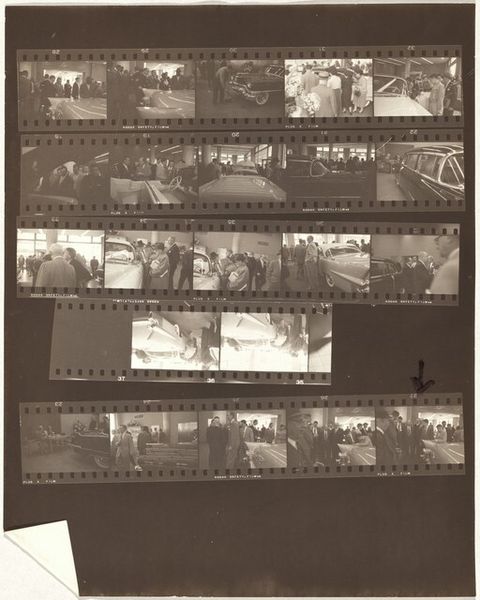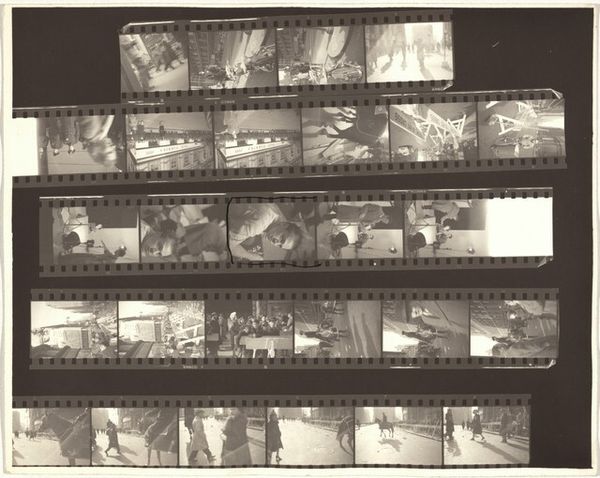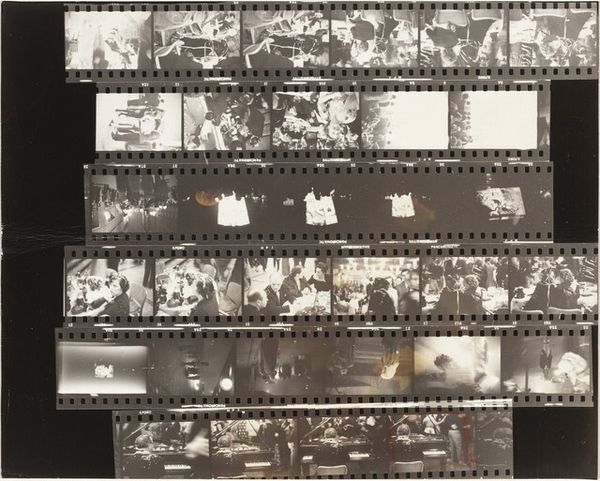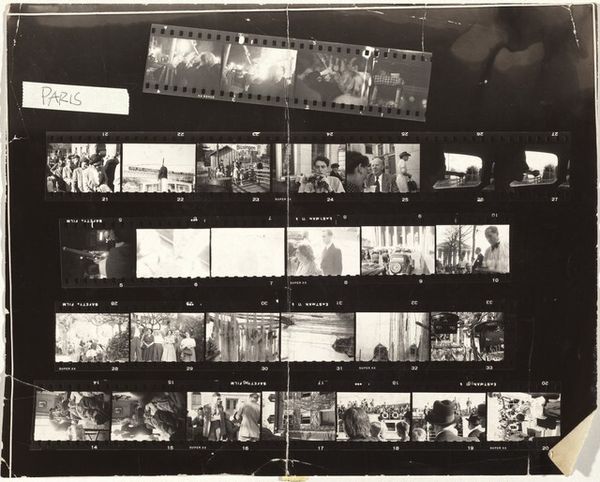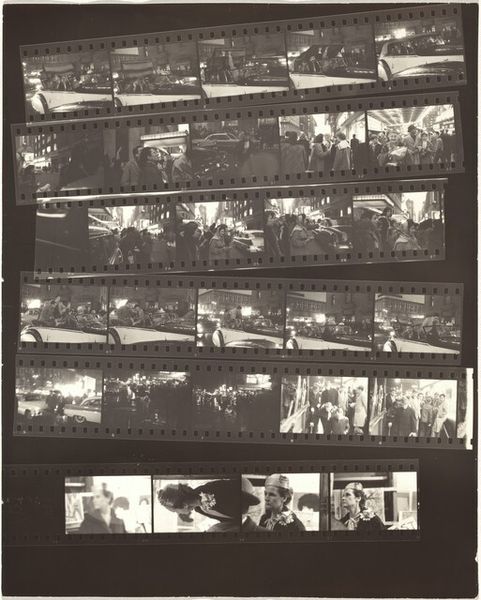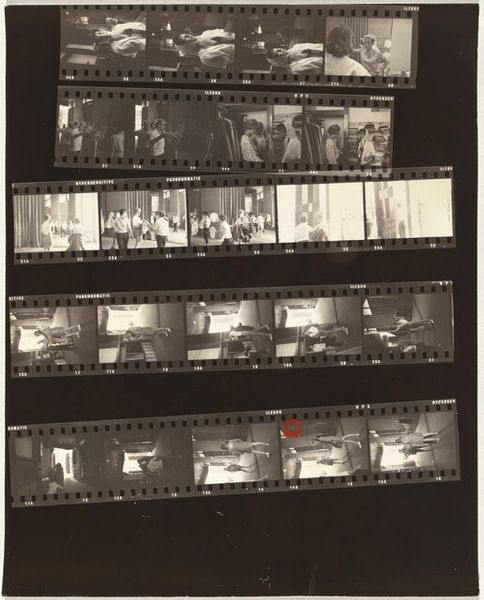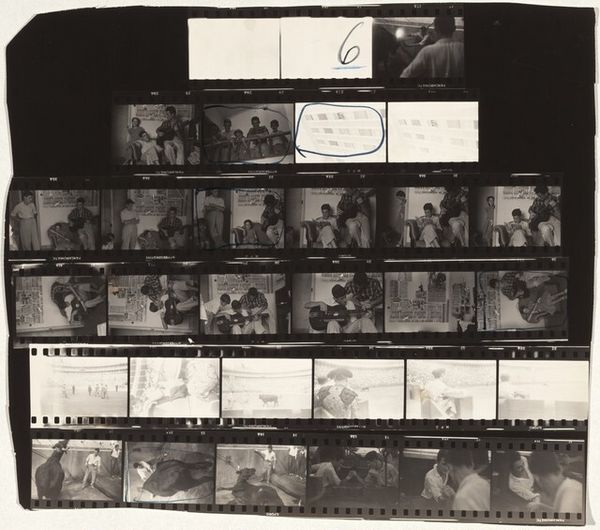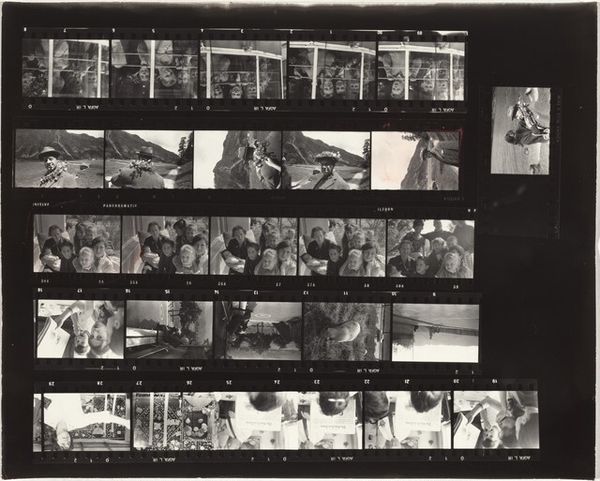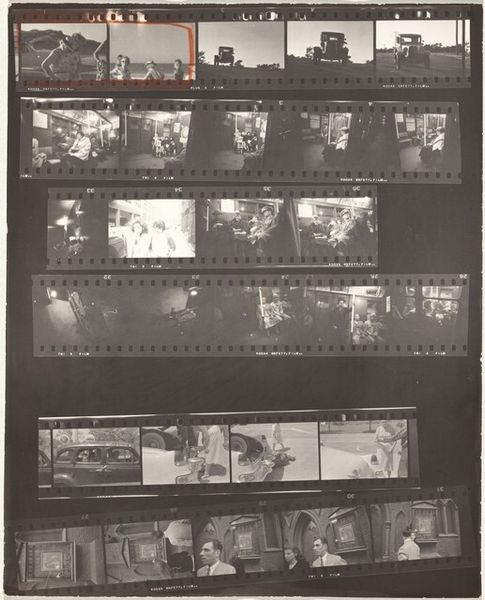
photography, gelatin-silver-print
#
print photography
#
archive photography
#
street-photography
#
photography
#
historical photography
#
gelatin-silver-print
#
ashcan-school
#
cityscape
#
modernism
#
realism
Dimensions: overall: 20.4 x 25.3 cm (8 1/16 x 9 15/16 in.)
Copyright: National Gallery of Art: CC0 1.0
Curator: Looking at "Early New York City no number" by Robert Frank, circa 1950, a gelatin-silver print capturing what seems like everyday urban scenes on a contact sheet. It gives a glimpse into Frank’s shooting process and provides multiple exposures to similar views, people, streets. Editor: My immediate impression is of fragmented narratives—like scattered moments refusing to coalesce into a single, cohesive story. There’s a stark, almost gritty realism present that speaks of post-war austerity, and the constraints felt then. Curator: That fragmented quality also highlights the material nature of photography itself: the roll of film, the process of developing, printing—each frame its own unit. Frank isn't just capturing a moment, but revealing the means of its production, bringing the viewer into the process. Editor: Exactly, and consider the social dynamics within those fragments. The way Frank frames his subjects seems deliberately detached, almost voyeuristic, drawing attention to class, race, and the anonymity of urban life, a commentary on social alienation and marginalization of ordinary citizens within a city celebrated as the epitome of modern opportunity. Curator: Right. Looking at the choices Frank made - his labor and resources - show him negotiating with that detachment as part of the means, both material and economic, in photographic production itself, considering limitations in developing spaces and accessibility, contributing to that aesthetic. Editor: That rawness, I think, is part of its power. By revealing these layers through a very direct shooting style, it avoids idealizing the city, but shows us New York as it likely was for many people: imperfect, often isolating, which leads to deeper reflection of inequality and how certain people and spaces become absent from mainstream representations of progress. Curator: It invites us to consider labor too – not just Frank’s in creating the image, but the unglamorous labor of daily life, what the lives of working-class New Yorkers may have looked and felt like at mid-century. Editor: A crucial point. Considering what was considered “worthy” of documentation helps deconstruct dominant narratives from the past, prompting us to engage more thoughtfully with power dynamics. The visual texture itself encourages these inquiries into access, agency, and hidden realities that may need attention even today. Curator: This approach underscores a point central to so much production – labor in the arts, which itself intersects with issues like authenticity, ownership, and representation. Editor: Precisely. It serves as a crucial entry point for critical self-reflection about the power and influence that our interpretations of photographic media has when contemplating both past injustices and visions for justice moving forward.
Comments
No comments
Be the first to comment and join the conversation on the ultimate creative platform.

